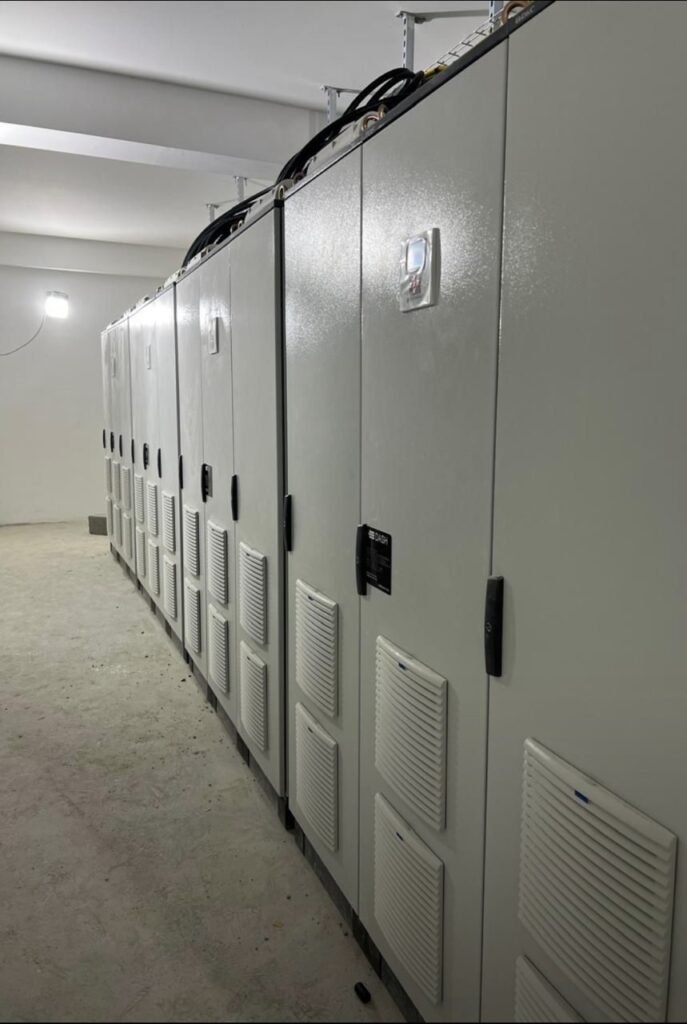Industrial Automation
Boost Efficiency and Cut Costs: Choosing the Best Industrial Automation Solution
Key Features to Look for in an Industrial Automation Solution
Scalability and Future-Proofing: Solutions That Grow With Your Business
LEIPOLE SOLUTIONS are deployed worldwide across diverse industrial automation environments – from manufacturing facilities and processing plants to data centers and infrastructure projects where maintaining optimal operating conditions is essential for system integrity and performance.
MANUFACTURING FACILITIES
A modern manufacturing facility employs numerous automated systems – from assembly lines and robotic equipment to programmable logic controllers (PLCs) and human-machine interfaces (HMIs). These systems require reliable electrical connections and proper environmental conditions to function optimally and continuously.
Because automation equipment generates significant heat during operation, effective thermal management is crucial for preventing costly downtime and extending component lifespan.

Temperature and Humidity Control
Challenges currently faced by the automation industry
High-precision manufacturing (e.g. machine tools, semiconductor equipment)
1: Extreme temperature stability requirements. High-precision manufacturing processes, such as precision cutting and semiconductor wafer manufacturing, are extremely sensitive to temperature changes. Temperature fluctuations in the control cabinet will directly affect processing accuracy and product quality. Traditional heat dissipation methods may be difficult to meet demanding temperature stability requirements.
2: Vibration and mechanical stress. High-speed machine tools and precision-positioned robotic arms will generate continuous vibration and mechanical stress, posing a threat to the reliability and life of electrical components. Problems such as loose connections and component fatigue failure may cause unexpected downtime and affect production efficiency.
3: Space limitations and compact design. High-precision equipment usually pursues compact design, and the control cabinet space is very limited. How to achieve efficient heat dissipation and reliable electrical connections in a limited space is a key challenge.
Automated Packaging
1: High-speed and continuous production requirements. Packaging production lines usually need to run at high speed and continuously to meet the needs of large-scale production. The electrical control system needs to be able to support high-speed operation and ensure long-term stability and reliability.
2: Frequent changeover and adjustment. The packaging industry has a wide variety of products, and packaging specifications and forms need to be changed frequently. The control system needs to have the ability to quickly change and adjust, reduce downtime, and improve production flexibility.
3: Vibration and shock. Packaging machinery, such as filling machines, sealing machines, labeling machines, etc., will generate vibration and shock when running at high speed. The electrical control system needs to be able to withstand these vibrations and shocks to ensure the stability of operation.
4: Limited space and compact design requirements. Many packaging production lines have limited space, and the control cabinet needs to be as compact as possible to save space and improve the layout efficiency of the production line.
Warehousing and Logistics Automation
1: Uneven temperature and humidity in large warehouse environments. The internal environment of large warehouses is complex, and the temperature and humidity in different areas vary greatly, such as high temperatures at high altitudes and high humidity near the ground. The control system needs to be able to adapt to this uneven environment to ensure the reliable operation of equipment in each area.
2: Equipment is scattered, maintenance and management are difficult. The automation equipment in large warehouses is widely distributed, and maintenance and management are difficult. Remote monitoring and diagnostic functions are needed to detect and solve problems in a timely manner and reduce manual inspection and maintenance costs.
3: Power supply and heat dissipation of mobile devices such as AGVs and stackers. Mobile devices such as AGV robots and stackers have restrictions on volume and weight. The power supply and heat dissipation design needs to be compact and efficient, and adapt to vibration and impact in mobile environments.
4: Energy-saving operation to reduce operating costs. Large-scale warehousing and logistics systems consume a lot of energy, and energy-saving operation is crucial to reducing operating costs. The control system needs to adopt energy-saving design, reduce its own energy consumption, and optimize the equipment operation strategy to achieve overall energy saving.
LEIPOLE solutions increase efficiency, reliability, and longevity across industrial automation applications worldwide. Our comprehensive range of thermal management, electrical connection, and power transformation products ensures optimal protection for critical systems in challenging environments.
Contact our engineering team today to discuss your specific requirements and discover how LEIPOLE’s industrial automation solutions can enhance your operational performance.
